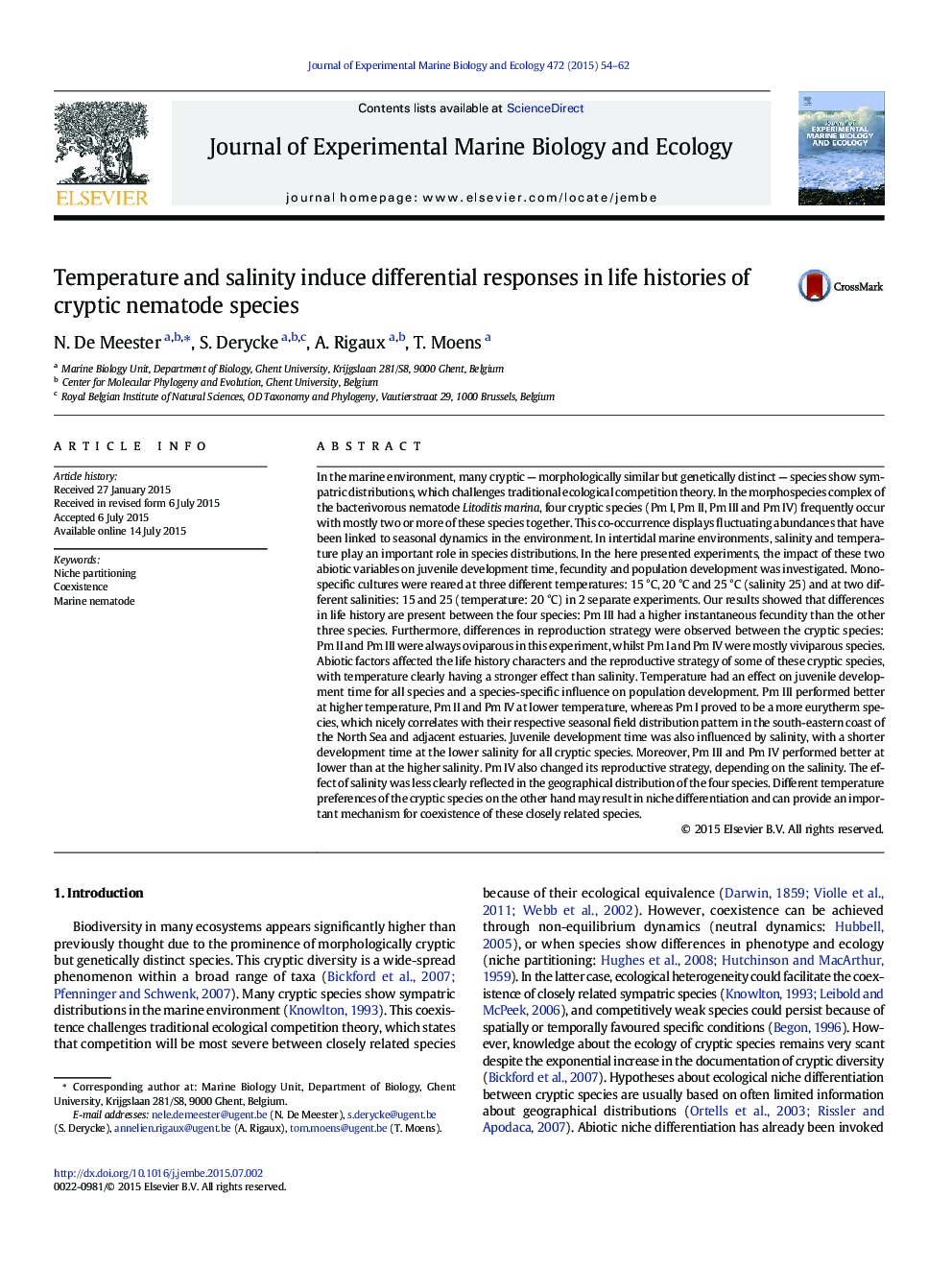| Article ID | Journal | Published Year | Pages | File Type |
|---|---|---|---|---|
| 4395355 | Journal of Experimental Marine Biology and Ecology | 2015 | 9 Pages |
•Differences in life history traits exist between cryptic species of Litoditis marina.•Abiotic factors affect life history traits in a species-specific way.•Temperature on its own had a stronger effect on life history traits than salinity alone.•The effect of temperature was reflected in the spatiotemporal distribution patterns.
In the marine environment, many cryptic — morphologically similar but genetically distinct — species show sympatric distributions, which challenges traditional ecological competition theory. In the morphospecies complex of the bacterivorous nematode Litoditis marina, four cryptic species (Pm I, Pm II, Pm III and Pm IV) frequently occur with mostly two or more of these species together. This co-occurrence displays fluctuating abundances that have been linked to seasonal dynamics in the environment. In intertidal marine environments, salinity and temperature play an important role in species distributions. In the here presented experiments, the impact of these two abiotic variables on juvenile development time, fecundity and population development was investigated. Monospecific cultures were reared at three different temperatures: 15 °C, 20 °C and 25 °C (salinity 25) and at two different salinities: 15 and 25 (temperature: 20 °C) in 2 separate experiments. Our results showed that differences in life history are present between the four species: Pm III had a higher instantaneous fecundity than the other three species. Furthermore, differences in reproduction strategy were observed between the cryptic species: Pm II and Pm III were always oviparous in this experiment, whilst Pm I and Pm IV were mostly viviparous species. Abiotic factors affected the life history characters and the reproductive strategy of some of these cryptic species, with temperature clearly having a stronger effect than salinity. Temperature had an effect on juvenile development time for all species and a species-specific influence on population development. Pm III performed better at higher temperature, Pm II and Pm IV at lower temperature, whereas Pm I proved to be a more eurytherm species, which nicely correlates with their respective seasonal field distribution pattern in the south-eastern coast of the North Sea and adjacent estuaries. Juvenile development time was also influenced by salinity, with a shorter development time at the lower salinity for all cryptic species. Moreover, Pm III and Pm IV performed better at lower than at the higher salinity. Pm IV also changed its reproductive strategy, depending on the salinity. The effect of salinity was less clearly reflected in the geographical distribution of the four species. Different temperature preferences of the cryptic species on the other hand may result in niche differentiation and can provide an important mechanism for coexistence of these closely related species.
